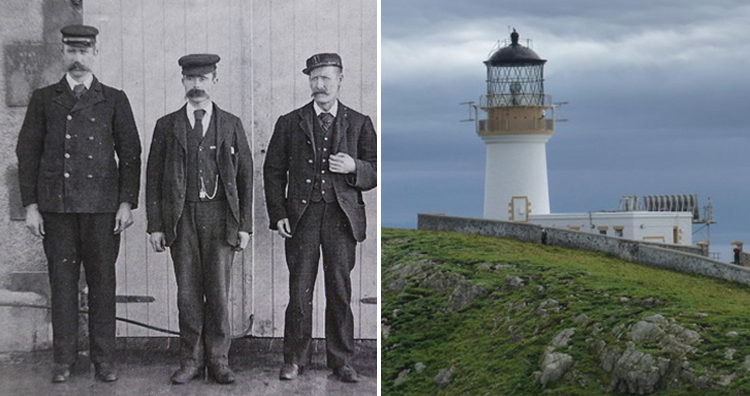

It seemed two of the keepers had gone out, and when they didn’t return, MacArthur had ventured out (Perry n.d.).įlannan Isles: the railway and steps to the west landing by Chris Downer, CC BY-SA 2.0, via Wikimedia Commonsīut this explanation didn’t cover why he went out without his coat, why no bodies ever washed ashore, and why there were any waves on a sea that was calm. The smashed open supply box on the western landing platform seemed to explain it. The rules forbade all three to leave the posts together.Įventually, the investigation concluded they’d been trying to retrieve a supply crate when a wave washed them out to sea.

No one could work out why William MacArthur, one of the keepers, had gone outside without his oilskin coat, especially in December. The log continued to speak of a violent storm, although they were quite safe in the new lighthouse, and no one reported any storms in that area until 17 December (Johnson 2016). One entry on 12 December described horrific winds, the quiet mood of the principal keeper, and that an assistant had been crying. Only the lighthouse log seemed to yield any clues. According to the signs in the lighthouse, they must have been gone for about a week. Captain Harvey ordered a search of the islands yet the missing men had vanished. He couldn’t find them anywhere in the lighthouse. He found half-eaten food and an upturned chair in the kitchen. Only one coat hung in the entrance hall, rather than three. Moore reached the lighthouse and discovered the door unlocked. He later described feelings of foreboding as he did so (Johnson 2016). Moore left the ship and climbed the steps to the lighthouse.

They drew near in their vessel, yet no one waited for them on the landing platform.įlannan Isles: the lighthouse by Chris Downer, CC BY-SA 2.0Ĭaptain Harvey blew the horn and even fired a flare to let the keepers know they’d arrived. They’d had reports that the light had gone out on 15 December. On 26 December 1900, Captain James Harvey took Joseph Moore to the lighthouse. Spirits apparently haunted the spot, and they didn’t want to encounter them. Shepherds would let their sheep graze on the island, but never spent the night there. Flannan, a 6th-century Irish bishop, once built a chapel on the island. Now, supernatural goings-on appear in the history of the island, before we ever reach the lighthouse. It’s at the centre of one of the oddest lighthouse legends in the British Isles. Among them lies Eilean Mor, where you’ll find a remote lighthouse. The Flannan Islands lie in the Outer Hebrides. In others, boats pass close enough to see Griffith’s waving arm (Harries 2020). In some, ships pass the lighthouse, blithely unaware of the traumatised state of the lone lighthouse keeper. Plenty of lighthouse legends grew up around the tragedy. The isolation and what happened badly traumatised him, leaving him almost unrecognisable by the time his replacements relieved him.Īfter that, three men needed to man a lighthouse, not two.

Most people think Howell spent three weeks alone at the lighthouse with just a corpse for company. Griffith’s arm seemed to wave to Howell with the movement of the sea. But the waves battered the coffin on the rocks, breaking it open. He placed Griffith in the coffin and continued to man the lighthouse on his own. Howell next built a coffin and tied it to the rocks. With no means to preserve the corpse, it began to decompose. Engraving of The Smalls Lighthouse by Souchal (1870) via Wikimedia CommonsĪt first, he tried to keep the body in the lighthouse.


 0 kommentar(er)
0 kommentar(er)
